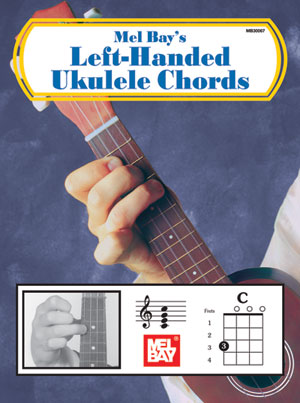
Filled circles are generally used to show the basic fretting of a chord. Use the left mouse button to add or remove filled circles to the custom Chord Diagram. Exiting using cancels any editing you may have done.Īdding filled and open circles to diagrams Quitting the diagram editor using adds the diagram to the diagrams already in the Chord Manager list and you'll be able to retrieve it later. The number of the fret currently at the top of the diagram is displayed to its left. The " First Fret" field at the top right allows you to move along the neck of the instrument. Open strings are represented by an " O" at their upper end and unplayed strings by an " X". The horizontal lines represent the frets of the instrument.

The item " Auto Chord Diagrams", in > Module and are displayed with the lowest pitched string on the left and the highest on the right.
#Tabledit left handed chords how to
TablEdit is further distinguished by its minimalized size and optimized code for speed of loading and running.Before we get into the discussion of how to use the Custom Chord Editor, there is one point which must be made. ability to zoom in and out in the editing window (Mac),.quickview, juke box & file manager (Win),.insertion of playing and historical notes,.editing and construction of custom chord diagrams.notation editing features (multiple voices, clefs, key signature, beaming and stem control, alterations, legato.),.fingerings and pick strokes, tempo and time signature changes, grace notes, crescendo,.various effects (hammer-on, pull-off, chokes, bends, slide, vibrato, roll, grace notes, muted notes, rasgueado, etc.),.complete control over note duration and attack for each note,.alternate tunings and conversion from one tuning to another,.TablEdit can record what you play on your MIDI instrument direct to tablature as well.TablEdit can import ASCII, MIDI, ABC, GuitarPro, PowerTab, Bucket O' Tab, TabRite, and Wayne Cripps files.įiles can be saved in TablEdit format or exported to ASCII, HTML, ABC, RTF, MIDI, NIFF, Lilypond or WAV formats.TablEdit opens and saves MusicXML files.TablEdit offers playback of tablatures via MIDI output with complete real time sound control (volume, balance, voices, MIDI banks.).TablEdit can save an image of the printed output in a variety of graphic formats (png, jpg, bmp, gif, tiff).
#Tabledit left handed chords pdf
TablEdit can recognize a tablature image or a PDF file.Custom chord diagrams and lead sheets can as well be printed out separately. TablEdit features high quality printout of tablature and/or musical staves.

TablEdit offers multitrack entering, editing and fully configurable printing: up to 16 instruments of from 1 to 12 strings each.Help files are available in English, French, German and Spanish. The program offers virtually unlimited language support: 17 linguistic patches actually available. TablEdit supports English, French, German, Spanish and Japanese as build-in languages.



 0 kommentar(er)
0 kommentar(er)
